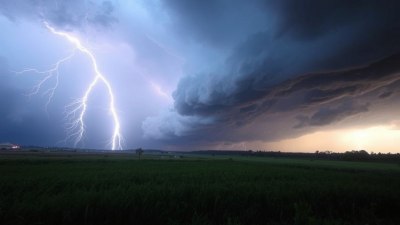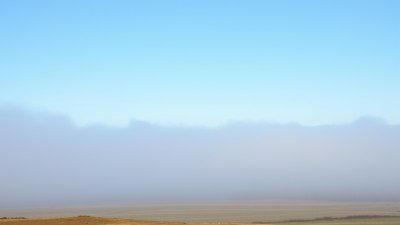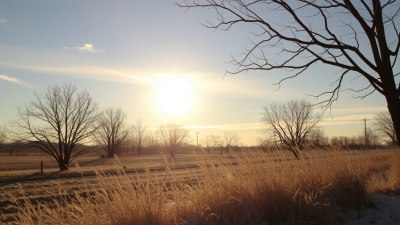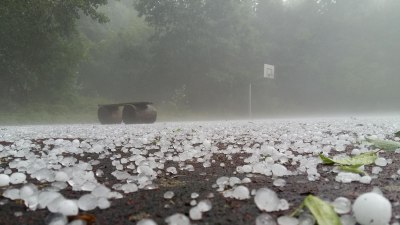What Makes Some Storms Last Hours While Others Pass Quickly
Explore why some storms endure for hours while others quickly dissipate, focusing on atmospheric conditions and storm dynamics.

Image created with Flux Schnell
Storms are fascinating and powerful natural phenomena that vary widely in duration, intensity, and impact. Some storms seem to linger for hours, drenching areas with continuous rain and persistent winds, while others sweep through swiftly, leaving behind only brief disruptions. Understanding the factors that determine how long a storm lasts involves examining atmospheric conditions, storm types, and the complex dynamics that influence storm development and dissipation.
Storm Duration: An Overview
The duration of a storm, or how long it lasts over a given area, depends on several interrelated factors. These include the type of storm, environmental conditions such as humidity, temperature, and wind patterns, as well as geographical factors like terrain and proximity to water bodies. Typically, storms are categorized as short-lived or long-lasting based on their behavior and lifespan.
Short-lived storms often form and dissipate rapidly due to unstable atmospheric conditions or limited fuel such as moisture. Long-lasting storms usually have a continuous supply of energy and favorable environmental conditions that sustain them over extended periods.
Types of Storms and Their Typical Lifespan
Different types of storms have characteristic lifespans. For instance, single-cell thunderstorms usually last about 20 to 30 minutes. These storms develop quickly, peak, and then weaken just as fast. On the other hand, multi-cell thunderstorms, squall lines, and supercell storms can persist for several hours due to complex internal dynamics and continuous inflow of warm, moist air.
Tropical cyclones, such as hurricanes and typhoons, represent another category of long-duration storms, often lasting days or even over a week as they travel across oceans and landmasses, sustained by vast amounts of oceanic heat and moisture.
Atmospheric Instability and Its Role
Atmospheric instability plays a crucial role in both the formation and maintenance of storms. Instability occurs when warm, moist air near the Earth's surface rises rapidly into cooler air aloft, leading to condensation, cloud formation, and precipitation. When this process is sustained, the storm can endure for extended periods.
In highly unstable environments, rising air parcels continue to move upward vigorously, fueling storm development. When instability decreases, storms lose their energy source and dissipate quickly.
Moisture Supply and Fuel for Storms
Moisture is essential for storm development and longevity. Water vapor in the air condenses to form clouds and precipitation, releasing latent heat that powers storm systems. A continuous supply of warm, moist air allows storms to maintain their intensity and persistence.
Storms that pass over areas with abundant moisture, such as warm oceans or humid land regions, are more likely to last longer. Conversely, storms that move into drier environments experience weakening due to lack of fuel.
Wind Shear and Storm Organization
Wind shear—changes in wind speed or direction with height—can influence how a storm evolves. Moderate wind shear can promote storm organization, leading to longer-lasting, more structured systems such as supercell thunderstorms. Strong wind shear, however, can tear apart developing storms, shortening their lifespan.
Wind shear helps separate the storm's inflow and outflow regions, preventing the storm from choking itself with its own downdrafts. When conditions are optimal, storms can sustain themselves for hours by continuously drawing in warm, moist air and expelling cooler air downward.
Role of Terrain and Geographic Features
Geography influences storm duration by affecting airflow and moisture availability. Mountains can block or disrupt storm systems, causing them to weaken or split. Conversely, mountain ranges can also enhance rainfall and prolong storms through orographic lifting, where air is forced upward by terrain, cooling and condensing moisture to feed the storm.
Water bodies such as lakes and oceans provide moisture that can sustain storms. Storms moving over such regions often last longer than those traveling over dry land.
Storm Movement Speed
The speed at which a storm system moves also affects how long a specific location experiences its effects. Slow-moving storms tend to linger, bringing prolonged rainfall and wind. This can increase the risk of flooding and other hazards.
Fast-moving storms pass quickly, reducing the duration of impact but sometimes causing rapid changes in weather conditions. The speed depends on larger-scale weather patterns like jet streams and pressure systems that steer the storm.
Interaction with Other Weather Systems
Storms don’t exist in isolation; their behavior is often influenced by nearby weather systems. For instance, the presence of a high-pressure system can block a storm’s movement, causing it to stall and last longer over an area. Similarly, the collision or merging of storm systems can extend the lifespan of the resultant storm complex.
Alternatively, interaction with dry air or a strong cold front can disrupt and dissipate storms quickly.
Examples of Long-Lasting Storms
Tropical cyclones like Hurricane Harvey in 2017 demonstrate how storms can persist for days if environmental conditions are favorable. Harvey stalled over Texas, resulting in unprecedented rainfall and flooding due to continuous moisture supply and slow movement.
Mesoscale convective complexes (MCCs) are huge clusters of thunderstorms that last several hours, sometimes overnight, fueled by sustained inflow of moisture and heat. These systems can impact large regions with persistent heavy rain.
Examples of Short-Lived Storms
Single-cell thunderstorms commonly develop during the afternoon in unstable, but relatively dry environments. Such storms may rapidly form and dissipate within 30 minutes, producing brief bursts of rain and brief lightning activity.
Pop-up storms in deserts or mountainous areas often have brief lifespans due to limited moisture and unstable wind patterns.
Humans and Technology in Storm Monitoring
Modern meteorology uses radar, satellites, and computer models to observe and predict storm behavior. Understanding why some storms last longer helps improve forecasts, enabling better preparedness and risk management.
Advanced numerical weather prediction accounts for factors such as atmospheric instability, moisture availability, wind shear, and terrain effects to estimate storm duration and path with increasing accuracy.
Practical Implications of Storm Duration
The length of time a storm lasts directly affects its potential impact. Long-lasting storms can cause extended periods of heavy rainfall, increasing the chance of flooding, erosion, and infrastructure damage. Extended wind events can lead to more widespread power outages and tree damage.
Short-duration storms tend to have more localized effects but can still pose threats such as lightning strikes, brief flash floods, and sudden strong winds.
Impact on Ecosystems and Environment
Storm duration influences local ecosystems by regulating water supply and nutrient cycles. Persistent storms may replenish groundwater but can also lead to soil erosion and habitat disturbance. Conversely, brief storms may provide limited ecosystem benefits, often insufficient during dry periods.
Storm duration affects agricultural productivity. Prolonged storms can saturate soils, damage crops, or delay planting and harvesting, whereas short storms may temporarily benefit crop growth without severe disruptions.
Several key elements combine to determine how long a storm lasts: atmospheric instability, moisture availability, wind shear, terrain and geography, storm type, storm movement speed, and interactions with surrounding weather systems. Variations in these factors create the wide range of storm lifespans observed globally.
Understanding these parameters not only advances scientific knowledge but also enhances disaster preparedness and mitigation strategies in vulnerable regions.











